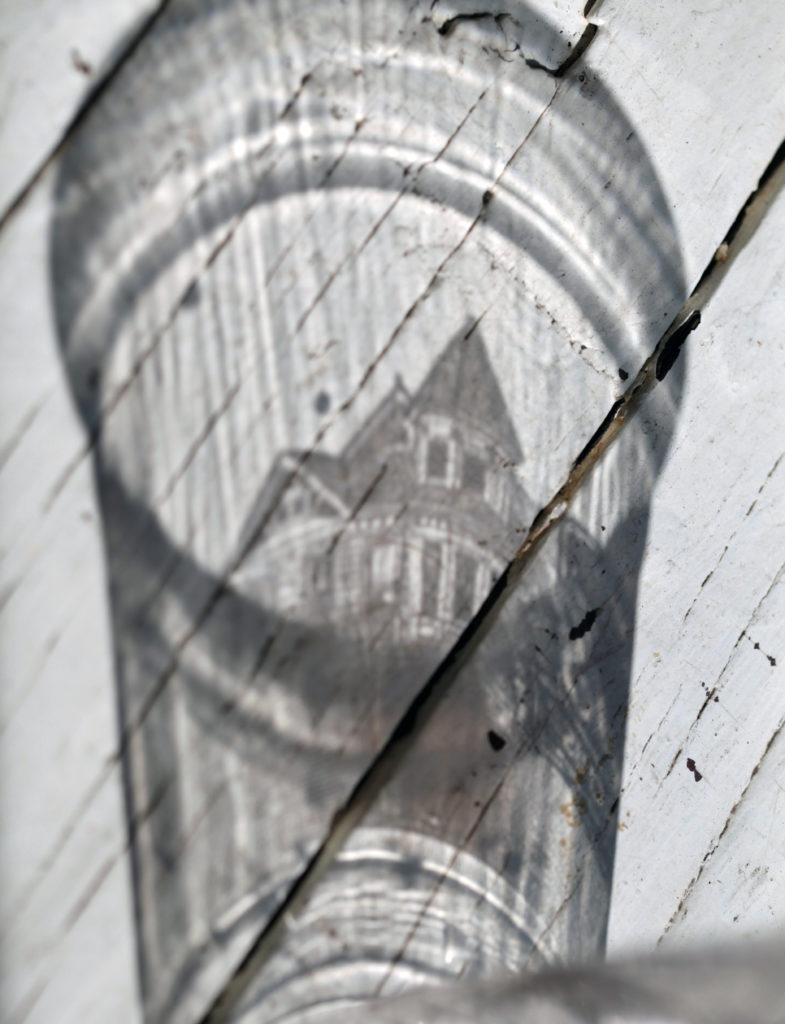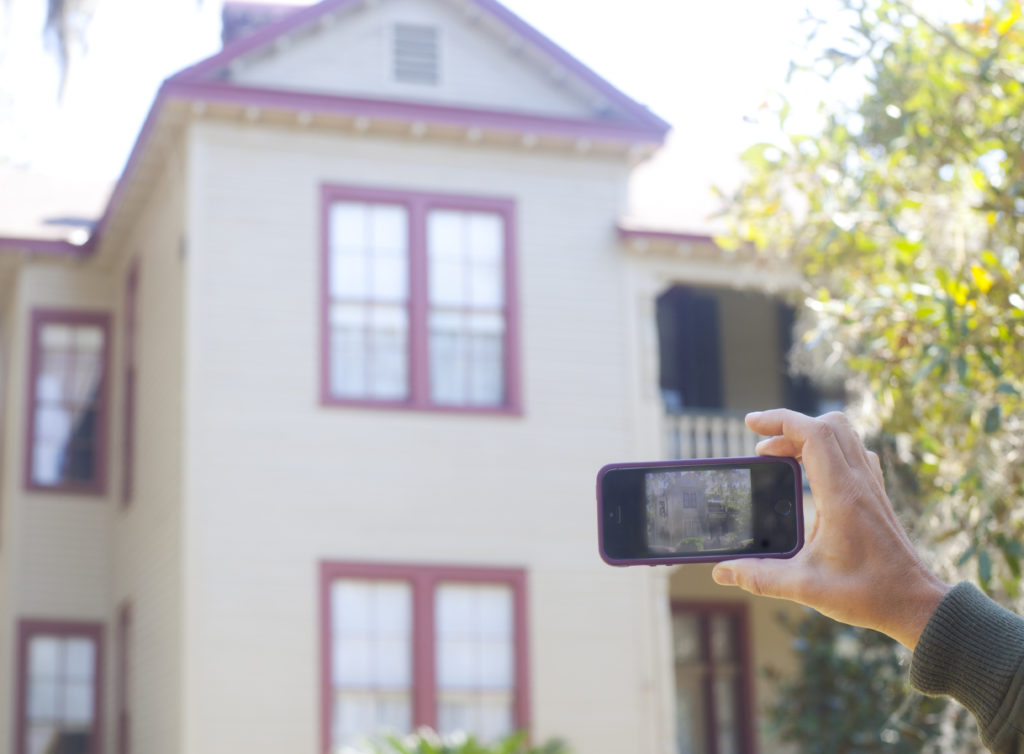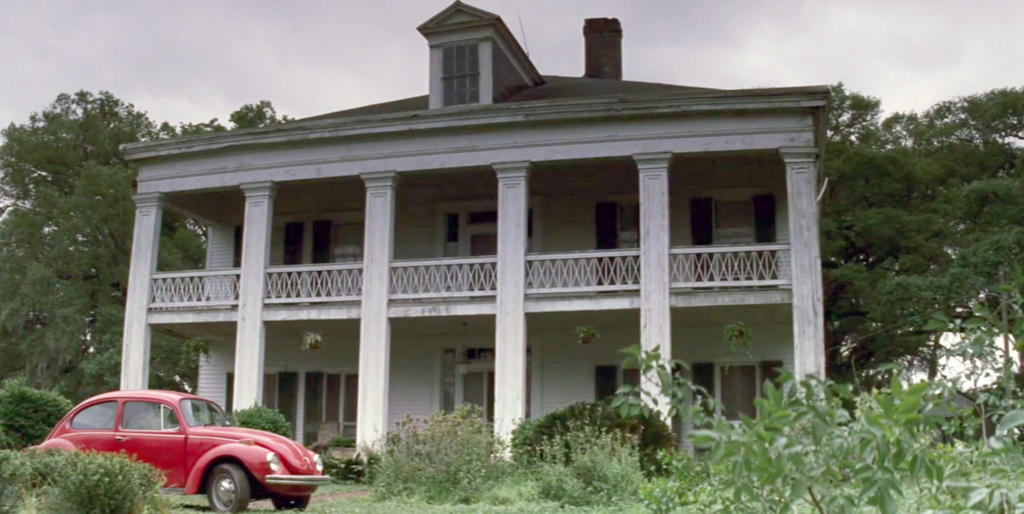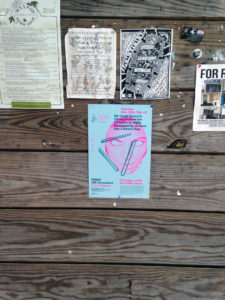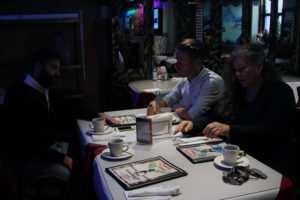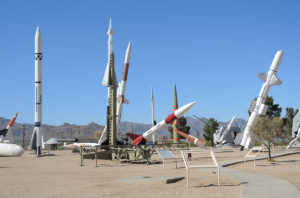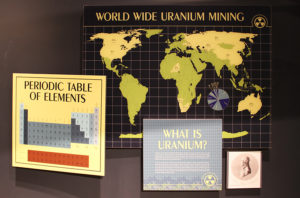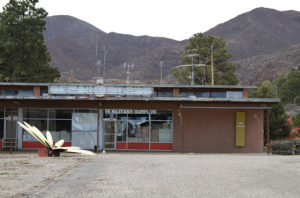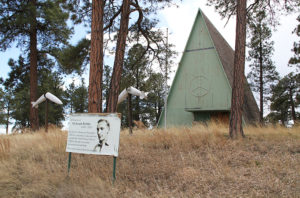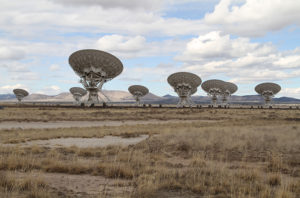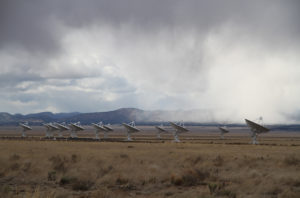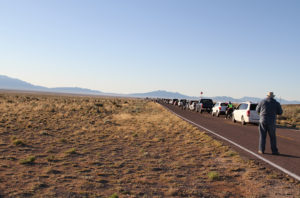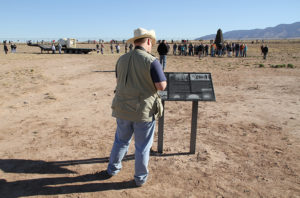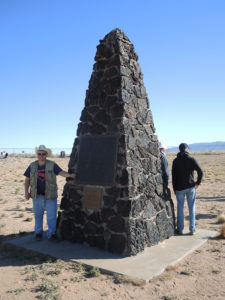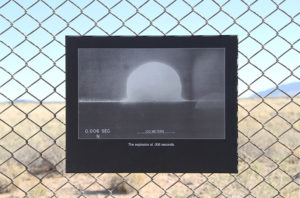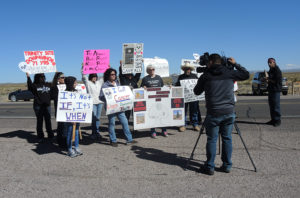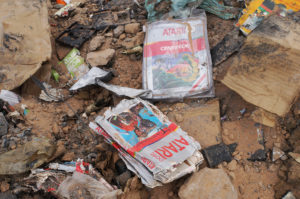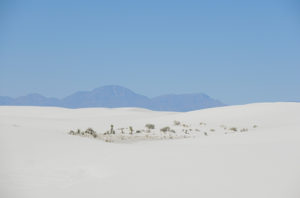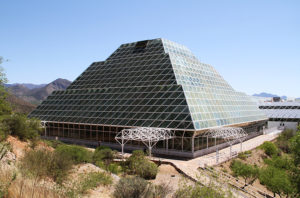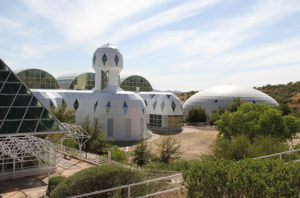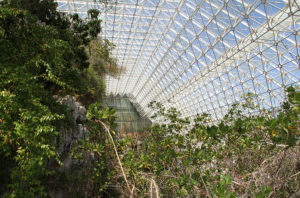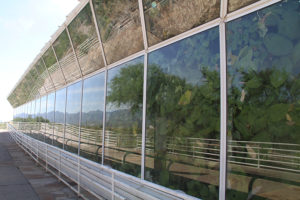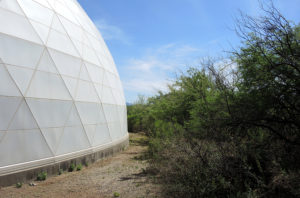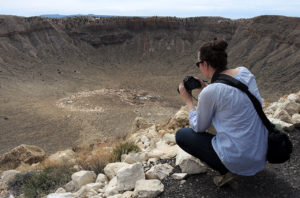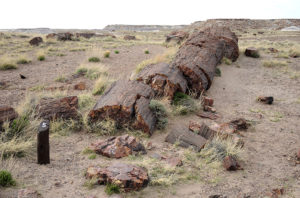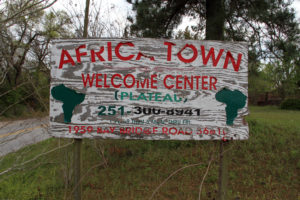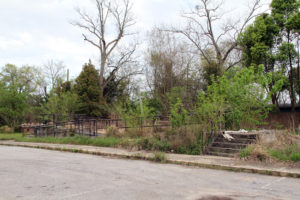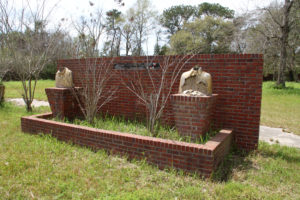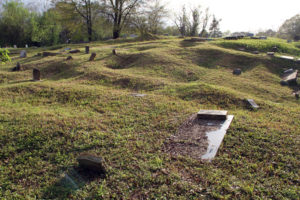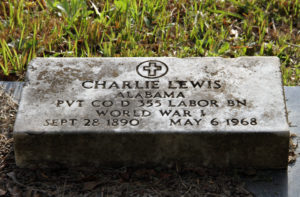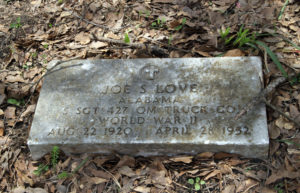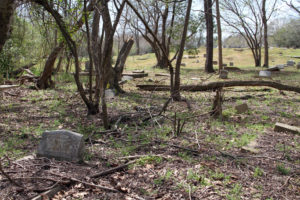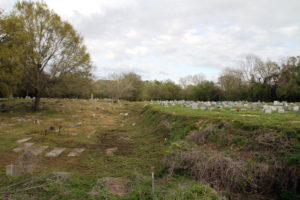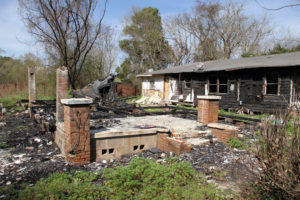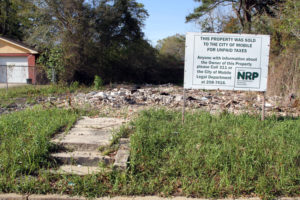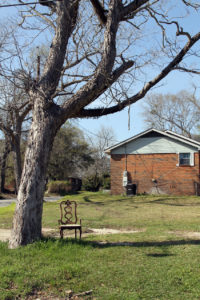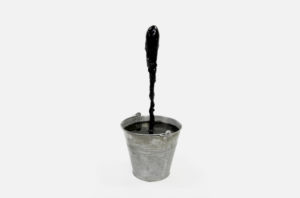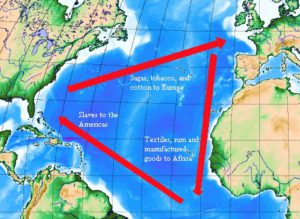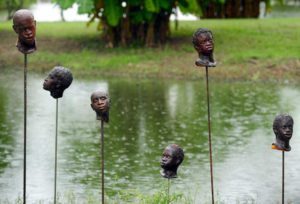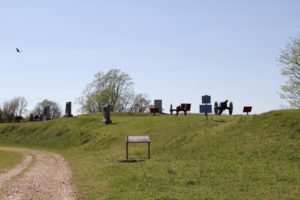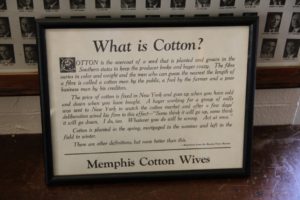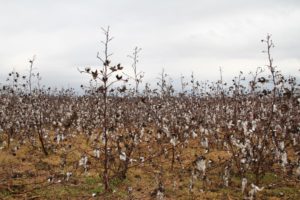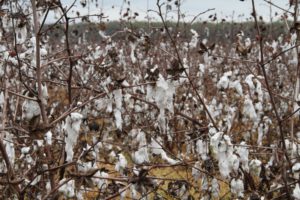In april en mei verbleef ik in kunstenaarsresidentie ‘Deltaworkers’, een nomadisch artistiek productie- en onderzoeksplatform dat de zuidelijke staten van de Verenigde Staten (als een van de laatste mythische plaatsen in de westerse cultuur) onderzoekt. Makers uit verschillende disciplines (beeldende kunst, theater, film, literatuur, muziek, architectuur en design) worden uitgenodigd voor een werkperiode. Namens het Nederlands Letterenfonds was ik de eerste schrijver in hun residentie te New Orleans. Voor mijn derde roman mocht ik onderzoek doen naar het watermanagement en de cultuur van deze unieke stad in Louisiana. Een stad met een houdbaarheidsdatum.
De reis
In New York neem ik de trein naar New Orleans. Een reis van eenendertig uur door zeven staten. Ik ben de enige white boy in het rijtuig en weet me omringd door enkele stevige dames. Hun handen gaan schuil in zakken chips. Vanaf het vertrek is het meteen gezellig. De vrouwen noemen me hun ‘Dutch white boy’ en ‘sweet baby’ en horen me uit over Amsterdam, mijn liefdesleven en marihuana. Ook vinden ze dat ik een echte baan moet zoeken, leraar of zo.
Het spoor, zoals veel sporen ter wereld, snijdt hier dwars door de zelfkant van de samenleving. Buiten zie ik mannen in slordige hemden op houten veranda’s van verpauperde huizen zitten, gammele kotten pal aan het spoor naast vergane fabrieken waarvan ik betwijfel of ze ooit jaren van voorspoed hebben gekend. En toch wappert hier op elke mesthoop de nationale vlag. Opdat de hoop nooit verloren gaat.
Als de avond valt leg ik mezelf tegen het treinraam en vind ik ontspanning in het luisteren naar het ritmische gekraak van de zakken chips en wat gekeuvel, zoals ik ook kan genieten van het knarsende begin van een langspeelplaat waaruit een zangstem opkomt. Ik staar naar mijn witte smoel in het avondraam. Misschien moet ik inderdaad maar leraar worden, mijmer ik in een vlaag van wereldverbetering. Zorgen dat zo min mogelijk mensen in de toekomst aan lager wal naast het spoor hoeven te wonen.
Een dag later rijdt de trein New Orleans binnen en ziet de wereld er weer heel anders uit. Mijn avontuur, mijn zestig dagen in Nola, in The Big Easy, gaan beginnen.
De woning
Ik woon in een zogeheten ‘Shotgun House’. Dat houdt in dat er geen gang aanwezig is; de ruimtes volgen elkaar op en zijn gescheiden door gordijntjes – je moet zodoende door elkaars kamer wanneer je naar de keuken, wc of badkamer wilt. Vroeger betaalde men in New Orleans per ruimte belasting, dus ook over de gang, vandaar dat deze in vrijwel alle huizen is wegbezuinigd. Wanneer je de voor- en achterdeur openzet kun je er symbolisch met een wapen doorheen schieten: een Shotgun House. Je zou er ook een grote sneeuwbal doorheen kunnen laten rollen, maar de Amerikanen houden nu eenmaal veel van hun tweede amendement.
Mijn kamer bevindt zich direct achter de voordeur. Soms zie ik ’s ochtends de ogen van de postbode als hij bukt om de post te bezorgen. Dat went eigenlijk niet. Stel je maar eens voor dat je een luikje in je slaapkamer hebt waar iedereen op elk moment van de dag doorheen kan kijken. Een constante peepshow. Op een ochtend knipoogde de postbode naar me terwijl ik op bed lag te lezen. Voor wie geïnteresseerd is in het gluren door luikjes raad ik overigens deze prachtige longread uit The New Yorker aan: The Voyeurs Motel.
De Deltaworkers-residentie is onderdeel van een kleine compound waar meerdere internationale kunstenaars verblijven. Omdat iedereen zijn of haar specifieke onderzoeksterrein heeft, kom ik in de achtertuin tijdens diners of nachtelijke wijngesprekken ontzettend veel over de stad te weten. Een kruisbestuiving. Iedereen inspireert elkaar.

De eerste dag
Op straat glimt een witte kralenketting. Ik stap van mijn fiets – een Amerikaanse cruiser, eenzelfde model waarmee het knulletje Elliott samen met E.T. in zijn mandje voorbij de maan vloog – en raap de ketting op. Ik overweeg om ermee naar het politiebureau te gaan, afdeling gevonden voorwerpen. Het sierraad blijkt nep, de kraaltjes zijn van plastic. Waarschijnlijk verloren door een kind. Ik hang de ketting te vondeling aan een paaltje en fiets verder. Plots zie ik er weer een, een groene, en aan de overkant van de straat een paarse, en een blauwe, een rode.
Die middag sta ik op een begraafplaats voor het graf van Hollywood-steracteur Nicolas Cage, en vraag ik aan Maggie, een van de twee Deltaworkers-assistenten, naar het verhaal achter de kettingen op straat. Zij verklaart dat deze tijdens het beroemde Mardi Gras-carnaval worden uitgedeeld aan vrouwen die hun borsten laten zien en aan mannen die op eenzelfde verzoek hun onderbroekje laten zakken. Een traditie dus. Maar ook buiten de delirium Mardi Gras-maand vinden er wekelijks muzikale optochten en verkleedpartijen plaats, waarbij de kettingen vanaf praalwagens naar het publiek worden geworpen. De stad ligt en hangt er vol mee.
Acteur Nicolas Cage kan dat zelf allemaal gewoon meemaken. De excentriekeling is nog lang niet dood: hij heeft enkel zijn laatste rustplaats alvast in zijn geliefde New Orleans laten bouwen. Zijn graftombe, een tamelijk megalomane witte piramide, is een populaire attractie op een van de vele imposante bovengrondse kerkhoven. Niemand wordt hier in de aarde begraven; dan drijf je binnen de kortste keren in je kist door de straten. Het is een goed gebruik dat de fans van Cage hun lippen roodstiften en zoentjes achterlaten op zijn piramide. Het lege graf bezoeken kost enkele dollars. Voor de geïnteresseerden: even buiten Haps (Noord-Brabant) ligt achter het heksenbos bij Gassel naast een vieze stinksloot een omgeploegde modderakker waarover mijn as uitgestrooid zal gaan worden. De entree is vooralsnog gratis.

Het sprookjesbos
De eerste week waan ik me in een sprookjeswereld. Het is betoverend, de zon schijnt, er klinkt muziek en overal staan groetende of dansende mensen op straat die meteen bereid zijn om een woord, een emmertje crawfish of een slok met me te delen. En dan heb ik het nog niet eens over dat beeldende decor: de kleurrijke houten huisjes, die nog het meest aan een sprookjesdorp doen denken. Maar het vrolijke verandert in een oogwenk in iets droevigs als je er langer bij stilstaat. De groezelige kant van de stad, de armoede. Oververhitte schreeuwende dronkaards op de straathoeken; donderwolken die me aanspreken waarbij ik van angst geen woord uit mijn mond krijg. Geweerschoten in de verte, het bizar hoge aantal moorden per week (vorig jaar werden er 170 moorden gepleegd in New Orleans – een stad zo groot als de provincie Utrecht). Diep in het sprookjesbos wonen de heksen en de wolven.
Op weg naar de stadsbibliotheek zie ik midden op een kruispunt een oude man met een schuiftrompet tussen het voorbijrazende autoverkeer staan. Hij lijkt niet alleen op Louis Armstrong, maar hij blaast ook een lied van de jazzlegende die hier is geboren en een park en een vliegveld naar zich vernoemd weet. De man glimlacht zijn mooie witte tanden naar me bloot als hij merkt dat ik vol bewondering naar hem sta te kijken. Ik voel het kriebelen in mijn buik. Het is op dat moment dat ik me realiseer dat ik nog van toeten noch blazen weet. Dat ik nul benul heb in welk oord ik ben beland en enkel op mijn vooroordelen vaar. Ik besef dat de komende maanden een avontuur gaan worden.
De gemeente
Ik weet uit betrouwbare bron dat Eberhard van der Laan het bevolkingsregister van Amsterdam op zijn nachtkastje heeft liggen. Elke avond voor het slapengaan bladert de burgervader daar even doorheen. Zijn rookgele wijsvinger glijdt daarbij langzaam over de namen. ‘Ach, Olivier Willemsen,’ zucht hij dan tegen zijn vrouw, ‘hoe zou het toch met hem zijn?’ En zo wordt elke inwoner van de stad uitgebreid in bed besproken.
In New Orleans zijn het vooral de kapitaalkrachtigen die de aandacht krijgen. Op dit moment ondergaat de stad een proces van gentrificatie; door extreem snel stijgende huizenprijzen breidt dit proces zich uit tot de armste wijken van de stad. De middenklasse dreigt ook hier te verdwijnen. Onlangs werd Ray Nagin (van 2002 tot 2010 burgemeester van de stad) veroordeeld tot tien jaar cel vanwege corruptie. Na de verwoesting door Katrina stopte Nagin voor tenminste 500.000 dollar steekpenningen in zijn zak van zakenlui die opdrachten voor de wederopbouw in de wacht probeerden te slepen. Hij had geld, snoepreisjes en vrachtwagenladingen graniet (!) voor zijn familiebedrijf aangenomen. De frauduleuze burgemeester viel elke avond gierend van plezier in slaap. Maar hij was en is absoluut niet de enige. De federale regering heeft miljarden dollars in de regio gepompt, die op grote schaal in de zakken van gecorrumpeerde tussenpersonen zijn verdwenen. Toch is er wel degelijk geïnvesteerd in de stad en na ‘The Storm’ zijn er absoluut verbeteringen gekomen (in onderwijs, zorg, huisvesting – hoewel de meningen daarover sterk verdeeld zijn), maar desondanks is er nog altijd veel mis en is de smaak van corruptie niet verdwenen. Veel Latijns-Amerikanen, destijds ingevlogen, wachten bijvoorbeeld nog altijd op uitbetaling voor hun herstelwerkzaamheden na Katrina.
Een van de zeldzame plekken in de stad waar wel alles op orde is, waar de straten gladgestreken en proper zijn, is – hoe kan het ook anders – het Central Business District (CBD). Met klerkentuinen reikend tot in de wolken en vlakke trottoirs waarop je een potje poolbiljart kunt spelen als je de putten slim gebruikt. In veel andere wijken wordt alleen zo nu en dan een stoplichtpeertje vervangen. Sommigen knipperen enkel nog oranje. Ze lijken te zeggen ‘Zoek het zelf maar uit’. Van der Laan zou hier geen oog dichtdoen.

De stadsdieren
Plots komt er vanonder het huis, ’s middags rond een uur of vier, een schildvarkentje, een gordeldier. Alsof er op de tekentafel van Moeder Natuur iets niet goed is gaan, zo ziet het fantasiebeest eruit; een rattenstaart, roze biggensnuit. Zich voortbewegend in een stalen accordeon, geniet het even van de zon.
Ook de koeskoezen (de possums) wonen onder de huizen van de stad. Geen enkele woning in New Orleans heeft een kelder, dus onder de huizen is het goed verstoppen voor de fauna. Deze buideldieren laten zich vaak na zonsondergang zien. Als je ze laat schrikken gebeurt er iets wonderlijks: hun pathetische doch effectieve verdedigingsmechanisme treedt dan in werking. Als het diertje namelijk in het nauw wordt gedreven, houdt het zich voor dood. Het valt theatraal op de zij en rolt zich op, mond geopend. De opossum kan vier uur lang onbeweeglijk blijven liggen en daardoor verliest een roofdier zijn belangstelling. De Amerikaanse uitdrukking ‘playing possum’ betekent zoiets als je dood of ziek houden.
De prachtige en door de cipressen met het spookachtige Spaanse mos eraan soms behoorlijk griezelig ogende moerassen rondom New Orleans, zijn het terrein van de Mississippi-alligators. Toeristenboten varen er doorheen en voeren de oerdieren hotdogs en marshmallows. Ook in het stadspark kun je tijdens het joggen zomaar door een alligator in je bil worden gebeten. Ik ren mijn snelste schema’s sinds jaren. Alligators zijn in tegenstelling tot krokodillen echter nauwelijks gevaarlijk. Een van de spannendste avonturen om de functie van het moeras te begrijpen, is the swamps met een kajak in te trekken. Alligators zwemmen rakelings langs je bootje.

Het risico van een muur
Mijn onderzoek is deze twee maanden voornamelijk gericht op het watermanagement van New Orleans. De stad is een lege badkuip omringd door vloedmuren, de zogeheten levees, die het water op afstand én uit het zicht houden. Enorme pompinstallaties staan 24/7 op strategische punten klaar om het water te beheersen. Maar dat is niet genoeg. Nola ligt diep onder zeeniveau en is op sommige plekken zelfs wat zinkende. In combinatie met een stijgende waterspiegel en het verdwijnen van de wetlands, is het voor veel experts zonneklaar dat de stad haar houdbaarheidsdatum rap bereikt als er niets gebeurt. De inwoners maar vooral de lokale en federale autoriteiten zijn echter niet al te happig om het water de stad in te laten, zoals architect David Waggoner het graag zou zien. Zijn bureau is belast met de zware taak om de stad voor de toekomst te behouden. Ik voer gesprekken met Waggoner naar aanleiding van zijn inspirerende ideeën. Waar het op neer komt is dat hij het water de stad in wil brengen. Ik bezocht vele plekken waaronder de Mississippi-delta, de (ondergrondse) kanalen, bestudeerde de plannen wat betreft de herinrichting van de wijken, de constructies van de paalwoningen op Grand Isle in de Golf van Mexico en het Make it Right-project van Brad Pitt in de totaal verwoeste wijk the Lower 9th Ward. Ik sprak met inwoners en studenten en verdiepte me in de sociale veranderingen die nodig zijn om de stad met ‘het water te laten leven’. Sinds reuzin Katrina hier de daken van de huizen pelde en de zeevloed maandenlang stinkende kanalen van de straten maakte waarin tientallen lijken voorbijdreven, is men begrijpelijk als de dood voor het water. Velen willen daarom niet zien dat New Orleans ermee omringd is.
Als je mensen vraagt wat hun oplossing is, dan zijn het hogere vloedmuren. Het liefst tot aan de hemel, voor het aller veiligste gevoel. Muren bouwen dus, populair in de States tegenwoordig… Dat is echter een levensgevaarlijke oplossing, zeker daar waar het de levees aangaat. Wall is safety – wall is risk. Een breukje in een van de kilometerslange vloedmuren en de badkuip stroomt geheid helemaal tot de nok vol. Volgens experts kan de stad in 2060 serieus in de problemen geraken als er niet snel iets constructiefs gebeurt. Dat wil zeggen: dat de stad met het water leert leven en het de stad in mag komen. Maar niet alleen New Orleans wordt bedreigd. De kustlijn van de zuidelijke staten verliest elke dag vele hectares aan grond. De stijging van de zeespiegel en de kans dat bedrijven uit het Zuiden wegtrekken gaat in Amerika nog voor spannende decennia zorgen – zeker met een hansworst als aanstaande president die global warming ontkent.
Bij mijn onderzoek ben ik veel geholpen door auteur Moira Crone, die het watermanagement eveneens uitgebreid en beroepsmatig bestudeerd heeft. Zij kon me alles vertellen over de stad voor en na Katrina. Over de evacuaties, de sociale spanningen. De anarchie, de plunderingen. Daarnaast heeft ze me bevlogen rondgeleid in de literaire wereld van New Orleans alsmede enkele lezingen van mijn roman Morgen komt Liesbeth geregeld, waaronder een bij Faulkner House Books. We hebben eveneens veel gefilosofeerd over mijn nieuwe roman – iets waarover ik in dit publieke verslag voor het fonds niet al te veel wil zeggen.

Een conclusie
A beautiful mess up, zo omschreef iemand New Orleans. Iedereen heeft zijn eigen hartstocht, vaak nauw verbonden met muziek en drank. Veel inwoners zijn dronken of daarvan aan het bijkomen. Elke week trekken parades met kralenkettingen door de straten.
In eerste instantie werd ik geconfronteerd met mijn vooroordelen. De beginweken volgde ik het stadsnieuws op de voet. Ik las over schietpartijen en berovingen om de hoek waar ik woonde. Met knikkende knietjes fietste ik ‘s avonds door de wijken, wachtend op dat pistool tegen mijn hoofd. Ik zag groepen op de trappen van een veranda hangen. Maar het waren slechts de filmbeelden en niet de kogels die door mijn hoofd schoten. Mijn verwondering won het van mijn vooroordelen en mijn angsten. New Orleans bleek naast de plek van mijn onderzoek een bron aan inspiratie en een introspectief avontuur, en ik keer er zo snel mogelijk weer terug.
Dank
Rest mij om een aantal mensen te bedanken zonder wie dit avontuur niet mogelijk was geweest: allereerst alle medewerkers van het Nederlands Letterenfonds en met name Orli en Pieter Jan, daarnaast directeuren Maaike Gouwenberg en Joris Lindhout van Deltaworkers voor… veel te veel om hier op te sommen, Moira Crone, mijn literaire gids en haar man Rodger, assistenten Maggie en Justine voor de roadtrips en het laten zien van de mooiste plekken van Louisiana, architect David Waggoner, Rosemary van Faulkner House Books, uitgeverij De Harmonie, Dawn DeDeaux voor haar bevlogenheid en onnavolgbare kookkunsten, Toon voor The American Spirits, Eric (‘My heart will go on’), Lala & Tim en allen die ik hier nog meer had kunnen noemen die deze twee fraaie maanden in The Big Easy onvergetelijk hebben gemaakt.













